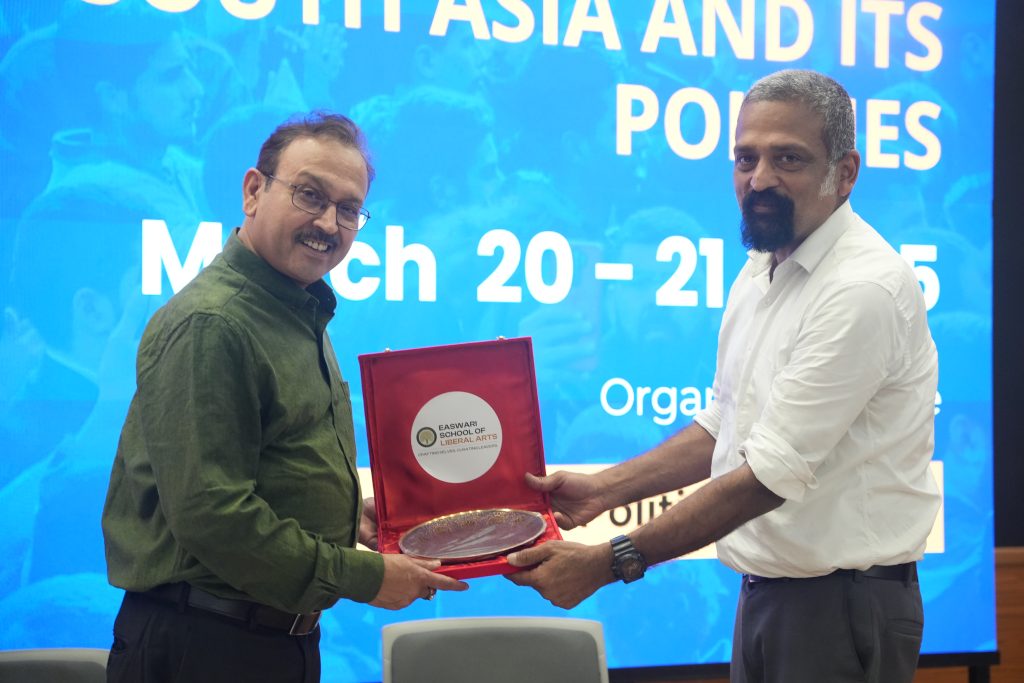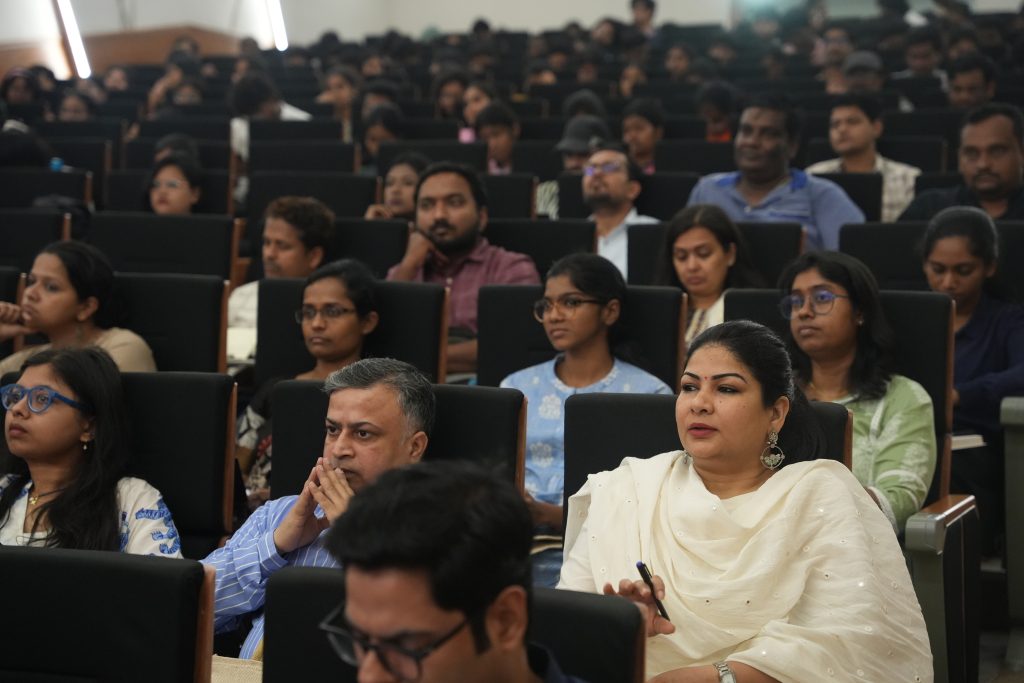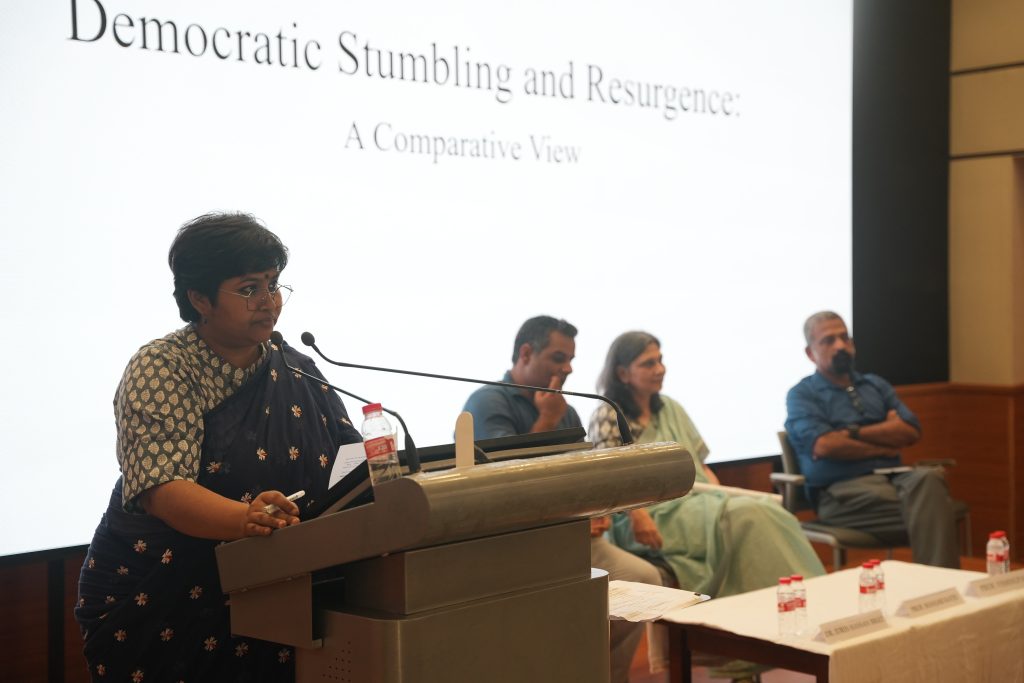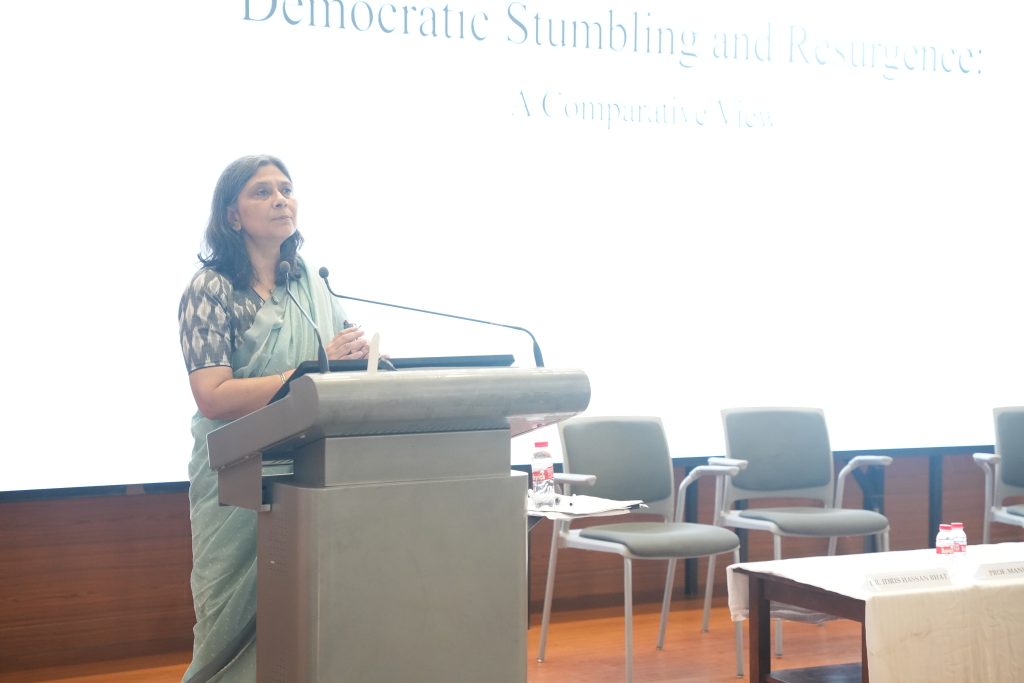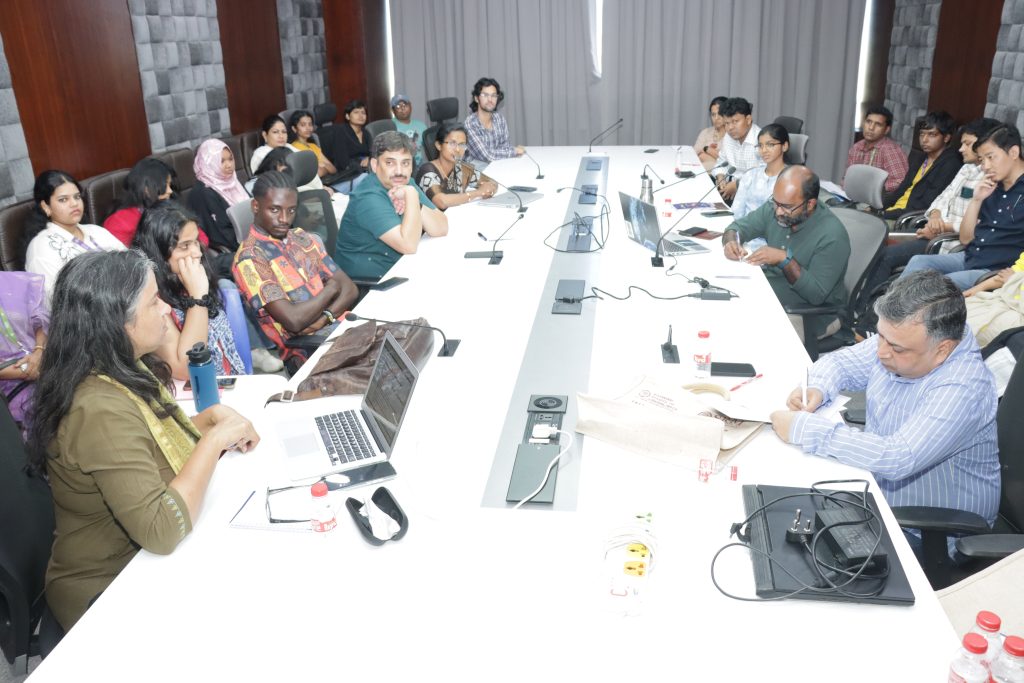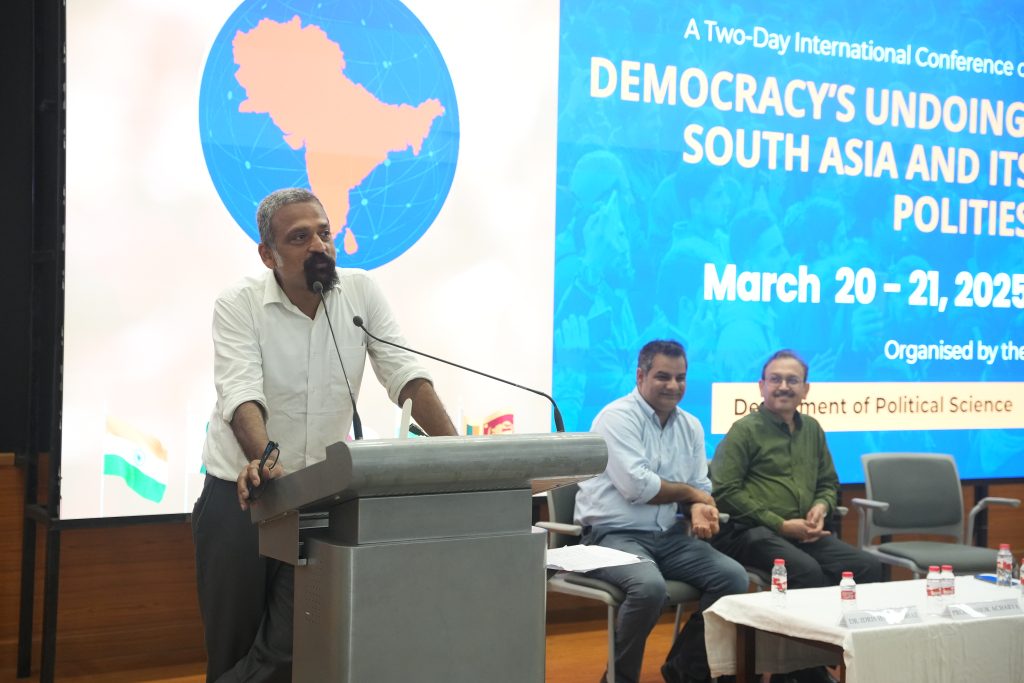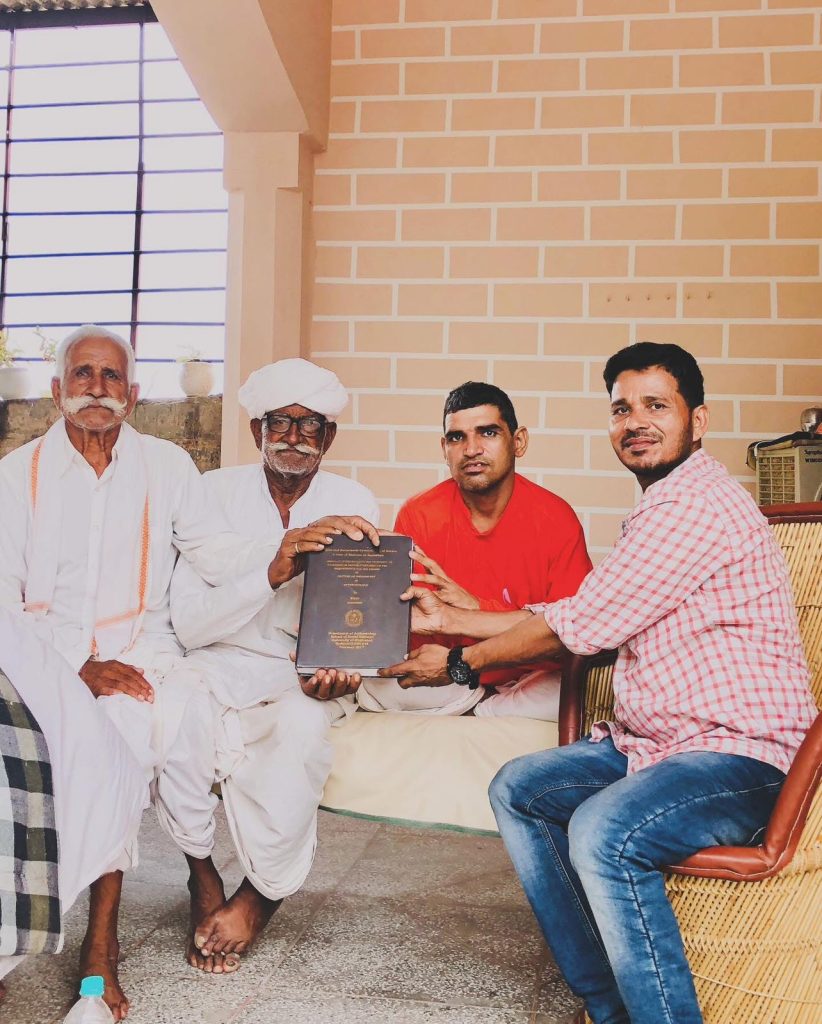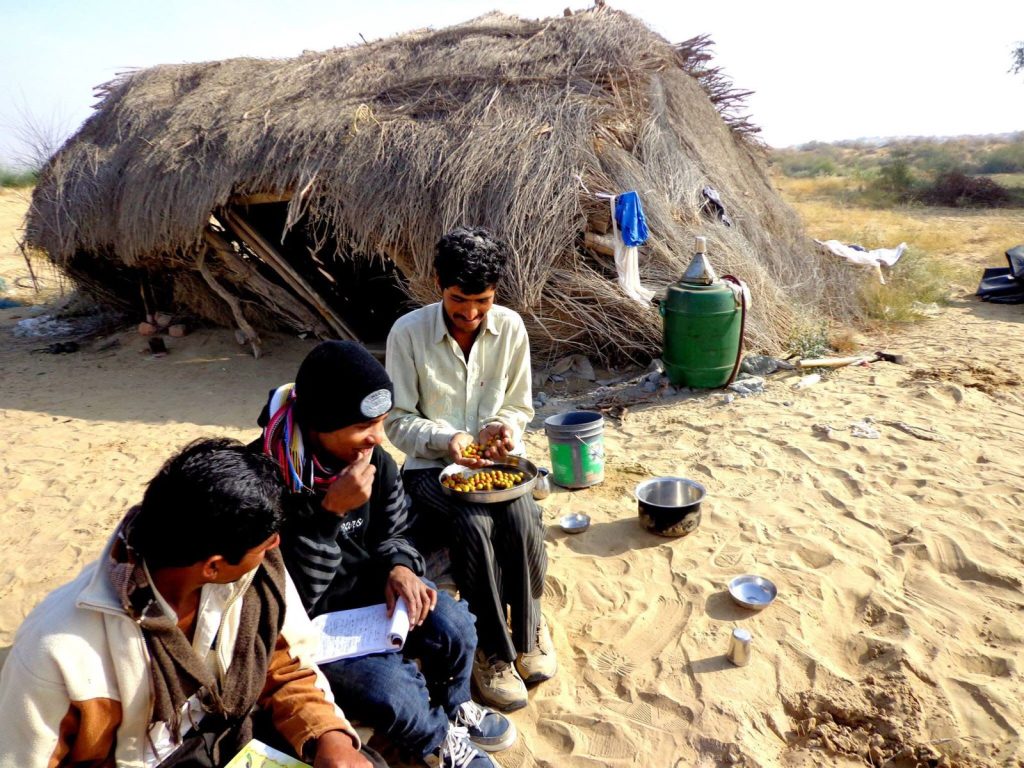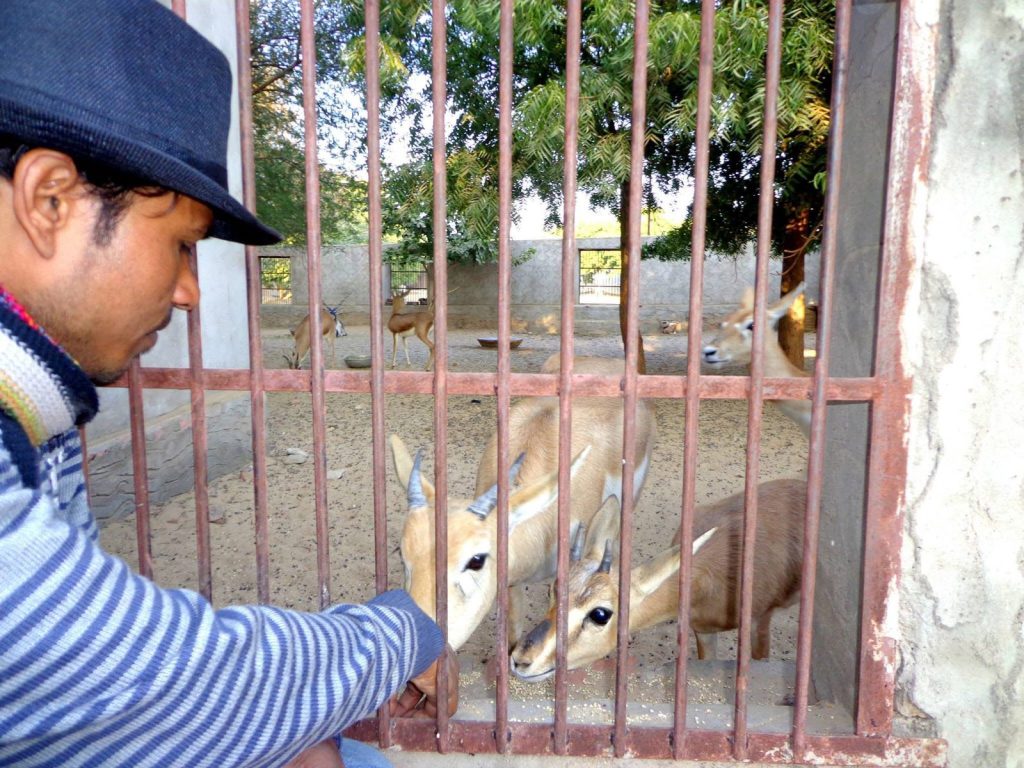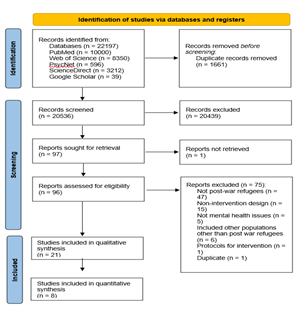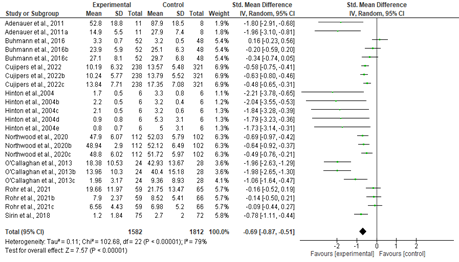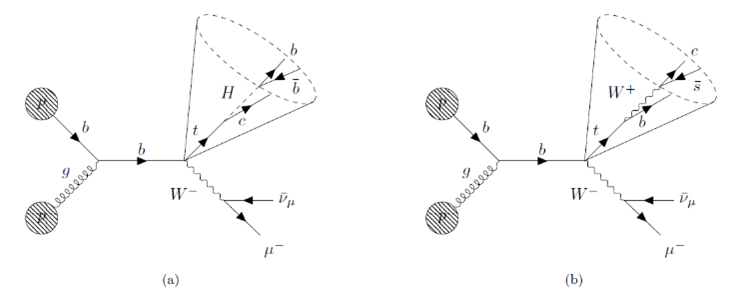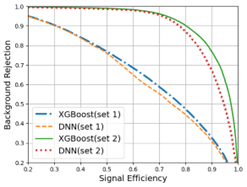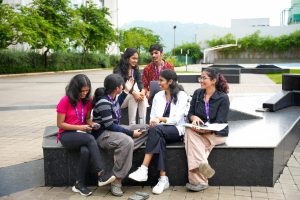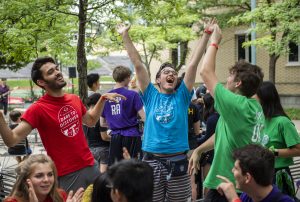Research News
- Proteome and Phosphoproteome Turnover Atlas in Mice – Paper Published In Cell Journal with 45.5 IF April 1, 2025
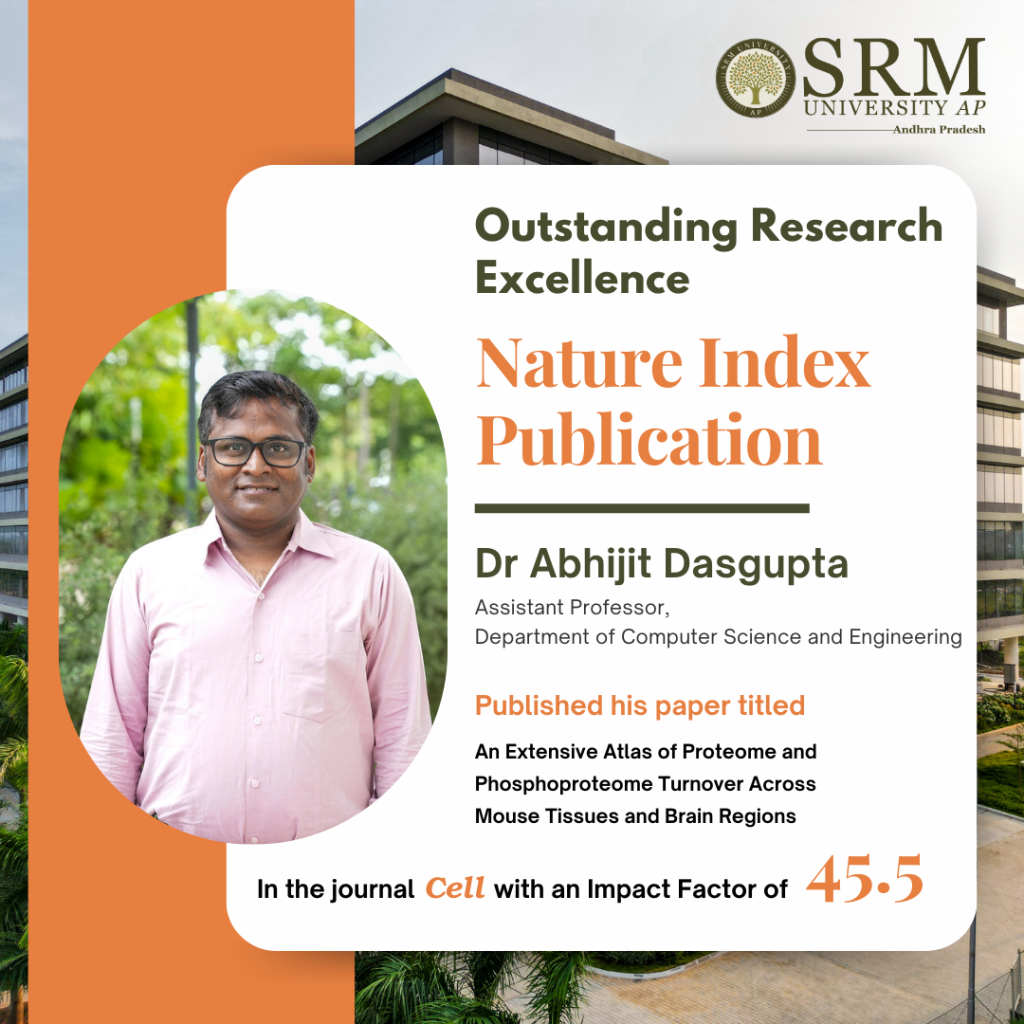
Dr Abhijit Dasgupta, Assistant Professor from the Department of Computer Science and Engineering, has published his breakthrough research article titled “Turnover Atlas of Proteome and Phosphoproteome Across Mouse Tissues and Brain Regions” in the nature index journal Cell having an impact factor of 45.5.
Abstract
This study presents a comprehensive in vivo atlas of protein and phosphoprotein turnover across 16 mouse tissues and brain regions, integrating advanced mass spectrometry with stable isotope labeling. By mapping over 11,000 proteins and 40,000 phosphosites, the study reveals tissue-specific patterns of protein lifetimes, correlating them with abundance, function, and protein-protein interactions (PPI). It highlights how phosphorylation regulates protein stability and how turnover is linked to peroxisome function, ubiquitination, and neurodegeneration-associated proteins such as Tau and α-synuclein. This high-resolution resource enhances our understanding of proteostasis and dynamic protein regulation, providing new insights into tissue-specific physiology and disease mechanisms.
Explanation of the Research in Layperson’s Terms
All cells in the body continuously make and break down proteins. The balance of these processes—called protein turnover—is vital for keeping tissues healthy. But until now, scientists didn’t have a clear, detailed map of how protein turnover works across different tissues and brain regions.
In this study, researchers used advanced techniques to measure how long thousands of proteins and their phosphorylated (chemically modified) versions last in 16 parts of the mouse body. They discovered that some proteins, especially in the brain and heart, live much longer than others. They also found that proteins interacting with each other often have similar lifespans, and that specific chemical modifications like phosphorylation can either stabilize or destabilize key proteins—such as those involved in Alzheimer’s and Parkinson’s diseases.
The team created an online tool that lets other scientists explore this rich dataset. The findings can help understand tissue function better and may lead to new ways to treat diseases by targeting protein stability.
Practical Implementation/ Social Implications of the Research
Practical Implementation:
This turnover atlas provides a foundational resource for drug development and tissue-specific disease research. It supports AI-driven approaches to predict protein dynamics, aids in identifying long-lived disease-related proteins, like Tau and α-synuclein, and enhances biomarker discovery for neurodegenerative and metabolic diseases. The integrated tool Tissue-PPT allows researchers to explore and analyze protein lifespan and phosphorylation patterns across tissues.
Social Implications:
Understanding how proteins behave differently across tissues could help create more precise therapies for complex diseases such as Alzheimer’s, Parkinson’s, and cardiomyopathies. The dataset empowers researchers globally to explore protein turnover without relying heavily on animal experiments, advancing ethical and efficient biomedical research.
Collaborations
- Yale University School of Medicine, CT, USA
- St. Jude Children’s Research Hospital, TN, USA
- University Medical Center Göttingen, Germany
- University of Trieste, Italy
- West China Hospital, Sichuan University, China
Future Research Plans
The next phase will focus on AI-driven modeling of site-specific phosphorylation turnover in relation to disease phenotypes, using the Tissue-PPT dataset as a foundation. This includes integrating proteomics, phosphoproteomics, and transcriptomic data to refine our understanding of proteome regulation. Special attention will be given to how phosphorylation modulates the stability of neurodegenerative disease proteins and the development of targeted dephosphorylation therapeutics (e.g., PhosTACs).
This research aims to inform personalised interventions and identify novel therapeutic targets by understanding how tissue-specific protein lifespans are regulated under physiological and pathological conditions.
Continue reading →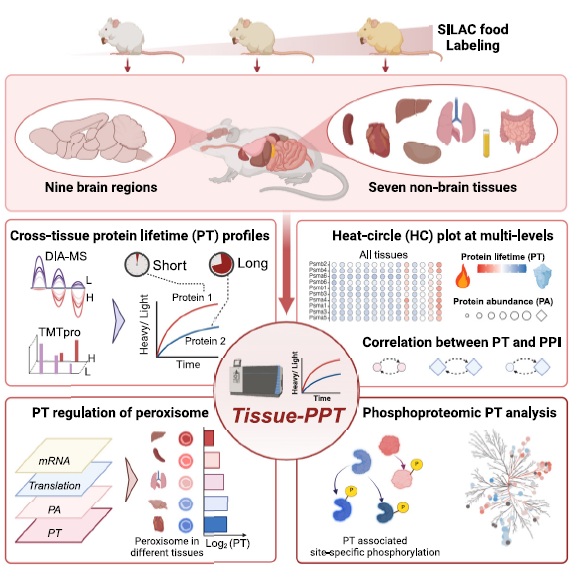
- Myco-remediation Strategies: Green Solution to Soil Pollution March 31, 2025
Dr Debajyoti Kundu, Assistant Professor at the Department of Environmental Science and Engineering in his research paper, Pharmaceuticals and Personal Care Products in Soil: Sources, Impacts and Myco-remediation Strategies, speaks of the innovative solutions to tackle contamination of soil. Dr Kundu’s research focuses on leveraging natural processes of fungi to promote sustainable environmental management.
Abstract:
Bioremediation is a sustainable approach for mitigating pharmaceutical and personal care product (PPCP) contamination in soil. This review highlights mycoremediation as an advanced fungal-based strategy for PPCP degradation. Fungi possess unique enzymatic pathways and metabolic diversity, allowing them to break down persistent pollutants in challenging environmental conditions. The paper discusses key fungal species, enzymatic mechanisms, environmental factors influencing degradation efficiency, and innovative biotechnological approaches such as myco-nanotechnology and enzyme engineering. By integrating these advancements with circular economy principles, this research underscores fungi’s role in sustainable environmental management.
Explanation in layperson’s terms:
Pharmaceuticals and personal care products (PPCPs), such as medicines, soaps, and cosmetics, often end up in the soil through wastewater and agricultural runoff. These chemicals persist in the environment, harming ecosystems and potentially entering our food supply. Our research explores how fungi, nature’s recyclers, can help clean up these pollutants. Certain fungi produce special enzymes that break down harmful substances into harmless compounds. By harnessing this natural process, we propose eco-friendly solutions to reduce pollution and protect soil and water quality for future generations.
Practical and Social Implications:
Mycoremediation offers a sustainable, cost-effective solution for removing PPCPs from soil, protecting water quality, and reducing human exposure to contaminants. By preventing pollutant uptake in crops, it enhances food safety and supports sustainable agriculture. This research also informs policies on wastewater treatment and pollution control, promoting eco-friendly remediation technologies for environmental and public health protection.
Collaborations:
This research is a collaborative effort involving experts from:
- Voice of Environment (VoE), Guwahati, Assam
- University of North Bengal, Darjeeling, West Bengal
- RCC Institute of Information Technology, Kolkata
- Sukanta Mahavidyalaya, University of North Bengal, Dhupguri, West Bengal
- SPMR College of Commerce, Jammu
- SRM University-AP, Andhra Pradesh
- CSIR – National Environmental Engineering Research Institute (CSIR-NEERI), Nagpur, India
Future Research Plans:
Future research will focus on scaling up my coremediation for field applications, optimizing fungal enzyme efficiency through enzyme engineering, and exploring microbial consortia for enhanced pollutant degradation. Myco-nanotechnology will be further developed to improve fungal stability and reusability. Additionally, studies will assess long-term soil health impacts and support policy frameworks for integrating fungal bioremediation into wastewater treatment and agricultural practices.
Continue reading → - Patent to Boost Health and Safety Protocols March 26, 2025
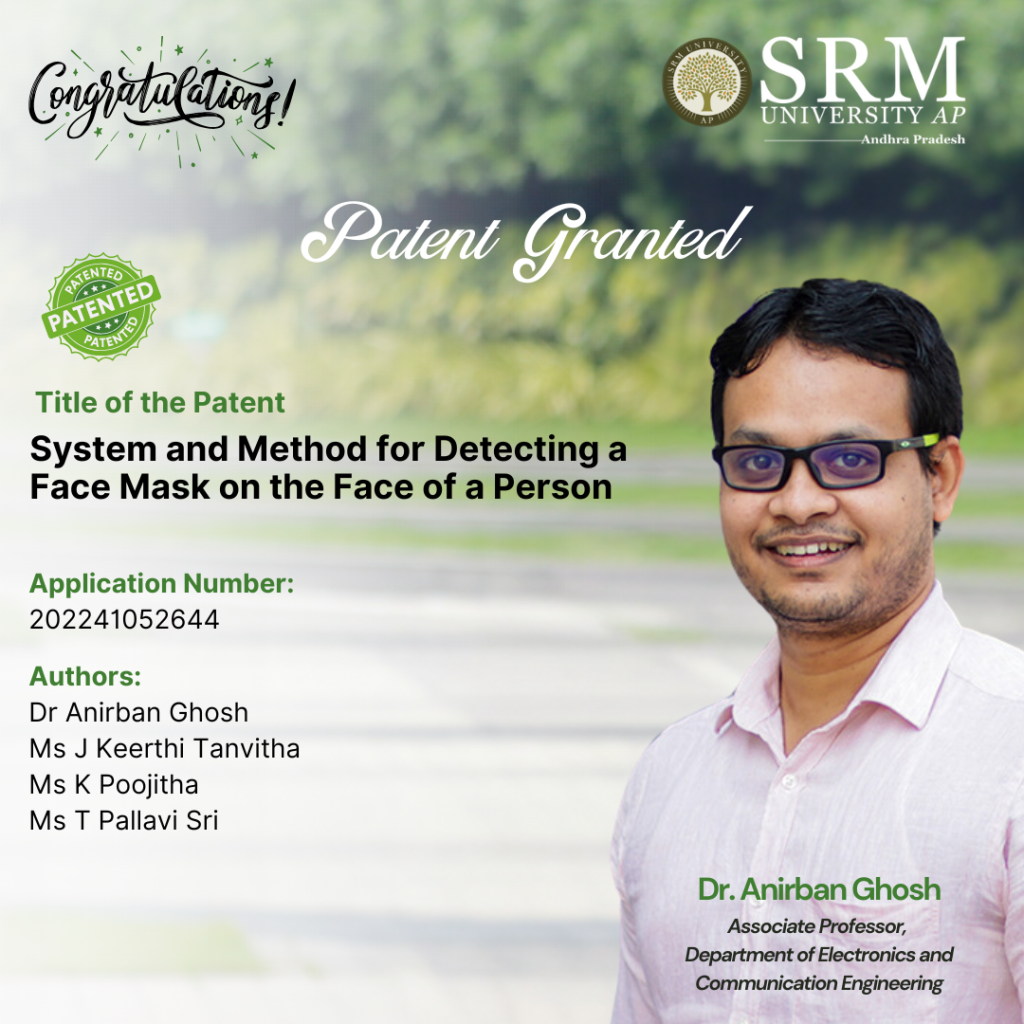 The patent titled, System and Method for Detecting a Face Mask on the Face of a Person with application number: 562697 by Assistant Professor, Dr Anirban Ghosh and his students from the department Ms J Keerthi Tanvitha, Ms K Poojitha, Ms T Pallavi Sri, has come up with a novel idea that focuses on developing a system and method for detecting face masks on individuals before they enter a gated space. Their research uses image capture, face detection, mask-wearing verification, and temperature sensing to ensure compliance with health and safety protocols.
The patent titled, System and Method for Detecting a Face Mask on the Face of a Person with application number: 562697 by Assistant Professor, Dr Anirban Ghosh and his students from the department Ms J Keerthi Tanvitha, Ms K Poojitha, Ms T Pallavi Sri, has come up with a novel idea that focuses on developing a system and method for detecting face masks on individuals before they enter a gated space. Their research uses image capture, face detection, mask-wearing verification, and temperature sensing to ensure compliance with health and safety protocols.Brief Abstract
The research focuses on developing a system and method for detecting face masks on individuals before they enter a gated space. The system integrates image capture, face detection, mask-wearing verification, and temperature sensing to ensure compliance with health and safety protocols. It utilizes artificial intelligence and sensor technology to determine whether a person is wearing a mask correctly and allows or denies entry based on preset criteria. The system also includes an aliveness detection module to ensure that a real person is being scanned and prevents tampering or spoofing.
Explanation in Layperson’s Terms
Imagine you are entering a building where you must wear a mask and have your temperature checked. Instead of a security guard manually checking each person, this system does it automatically and without contact.
Here’s how it works:
- A camera captures your face as you approach the entrance.
- A software program checks if you are wearing a mask correctly (covering your nose and mouth).
- A temperature sensor scans your body temperature.
- If your mask is worn properly and your temperature is normal, the door opens and you can enter.
- If you are not wearing a mask correctly or have a high temperature, an alert is triggered, and entry is denied.
This system is especially useful in hospitals, offices, schools, airports, and malls to ensure safety without requiring human intervention.
Practical and Social Implications
This system plays a crucial role in public health by ensuring compliance with mask-wearing protocols, especially in high-traffic areas like hospitals, offices, and airports. By automating the detection process, it reduces reliance on manual checks, minimizing human error and lowering exposure risks for security personnel. Additionally, it streamlines entry procedures, preventing congestion at access points. While the technology enhances safety, it also raises concerns about privacy and data security, making it essential to implement ethical safeguards. Beyond COVID-19, this system can be adapted for future health crises requiring similar preventive measures.
Future Research Plans
Future improvements will focus on enhancing accuracy using AI to recognize different mask types and improve real-time detection. Expanding the system to include biometric health screening, such as cough detection and respiratory analysis, could make it a broader health monitoring tool. Integration with facial recognition and automated access systems will further strengthen security applications. Additionally, optimizing the system with edge computing will enable faster, more efficient processing. As the need for contactless health monitoring grows, refining this technology will ensure its continued relevance beyond COVID-19.
Continue reading → - Patent on Invisible Watermarking In Social Media Images March 26, 2025
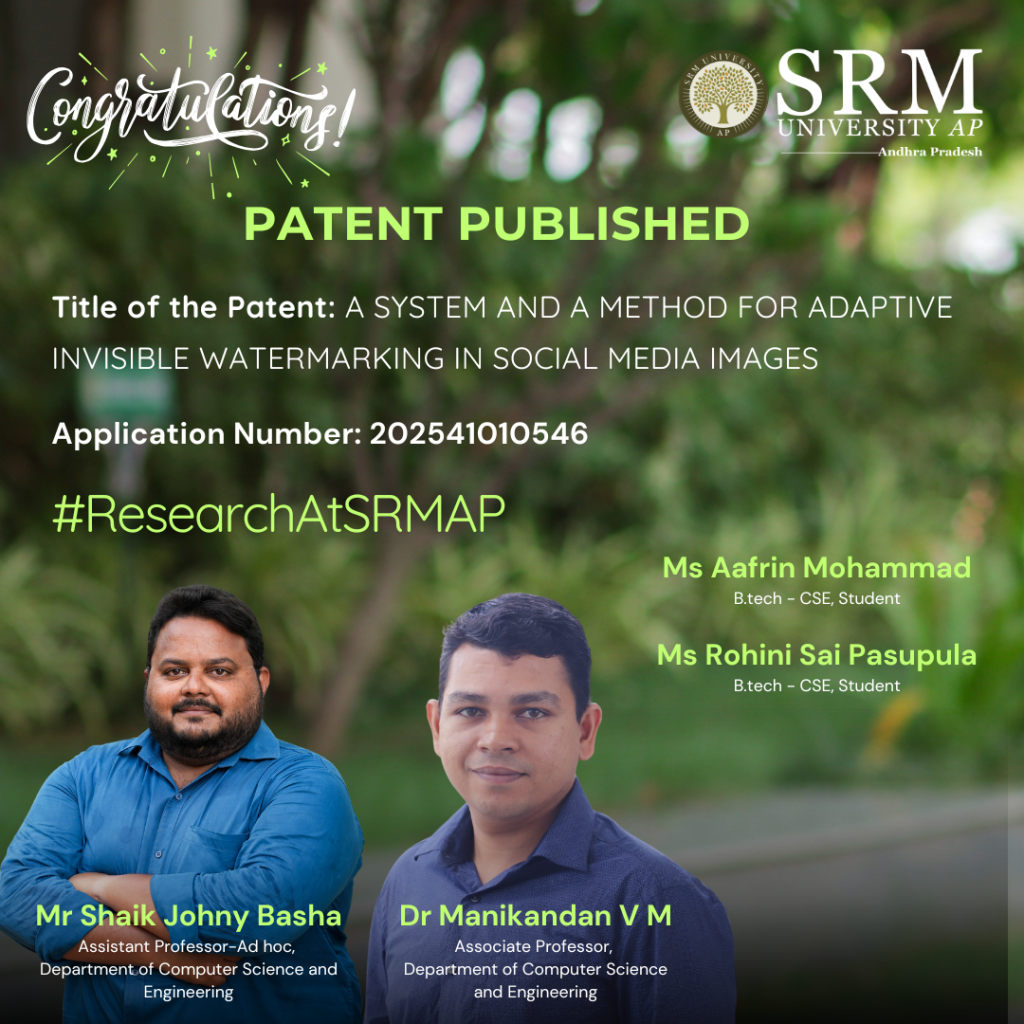 Professors, Dr Manikandan V M and Mr Shaik Johny Basha from the Department of Computer Science and Engineering along with their B.Tech. students Ms Aafrin Mohammad and Ms Rohini Sai Pasupula have published the patent titled, “A System And A Method For Adaptive Invisible Watermarking In Social Media Images.” Their patent introduces a novel method for securing photo downloads, ensuring that any unauthorised use of the images can be traced back to its original source if tampered with.
Professors, Dr Manikandan V M and Mr Shaik Johny Basha from the Department of Computer Science and Engineering along with their B.Tech. students Ms Aafrin Mohammad and Ms Rohini Sai Pasupula have published the patent titled, “A System And A Method For Adaptive Invisible Watermarking In Social Media Images.” Their patent introduces a novel method for securing photo downloads, ensuring that any unauthorised use of the images can be traced back to its original source if tampered with.Abstract:
The invention presents a System and Method for Adaptive Invisible Watermarking in Social Media Images to enhance digital privacy and copyright protection. The proposed system integrates advanced invisible watermarking technology to embed unique, imperceptible metadata into images. When users attempt to download or screenshot images from social media, the system automatically adds a hidden watermark containing identifying details such as IP address, Date, Time, and Location. This ensures that any unauthorized use of the images can be traced back to the source. By combining image processing, data encryption, and digital rights management, this system provides a robust solution for protecting online images without affecting their visible quality.
Explanation in Layperson’s Terms:
In today’s digital world, people frequently share personal photos on social media, but there is very little protection against unauthorized downloads or screenshots. Once an image is copied, there is no way to track who took it or where it is being used. Through their invention, the team solves this problem by embedding a hidden watermark in images without changing how they look. This hidden watermark automatically adds invisible information such as the IP address, location, date, and time of the user who downloads or screenshots the image. This means that if the image is misused or shared without permission, it can be traced back to the source. By combining image editing techniques, encryption, and digital security, they ensure that people’s photos remain safe and trackable online. Hence, the invention provides a new way to protect privacy and copyright while allowing users to engage freely on social media.
Practical and Social Implications:
The proposed Adaptive Invisible Watermarking System can be practically implemented using a combination of image processing algorithms, digital watermarking techniques, and cloud-based metadata storage. Below are the key steps in its real-world application:
- Integration with Social Media Platforms: The system can be embedded in social media platforms like Facebook, Instagram, X, and LinkedIn to automatically apply invisible watermarks containing metadata (IP address, timestamp, location, etc.) to uploaded images without altering their visual appearance.
- Automatic Watermarking During Downloads or Screenshots: When a user downloads or screenshots an image, the system automatically applies a second layer of invisible watermarking that includes identifying information of the downloader, ensuring every image copy has a unique identifier for traceability.
- Forensic Tracking and Copyright Protection: If an unauthorized user shares or misuses an image, the embedded watermark can be extracted using forensic tools to trace back to the original downloader, aiding in copyright enforcement, digital rights management (DRM), and legal actions against unauthorized distribution.
- Security and Privacy Features: The system can implement blockchain technology to securely log watermark data, ensuring tamper-proof verification, and provides users the option to control watermarking settings based on their privacy preferences.
- Prevention of Image Misuse and Cybercrime: The system reduces cases of identity theft, deepfake creation, and revenge porn by enabling traceability of unauthorized image usage, helping protect individuals from stalking and cyber harassment.
- Enhanced Digital Privacy and Ownership Rights: Users are empowered to maintain ownership of their photos even after sharing them on social media, encouraging ethical content sharing while discouraging unauthorized downloads.
- Impact on Content Creators and Businesses: Artists, photographers, and digital content creators can protect their work from theft or unauthorized republishing, while influencers and businesses can safeguard their brand assets and prevent content duplication.
- Legal and Ethical Implications: The system encourages social media companies to take responsibility for user content protection and supports law enforcement in tracking down offenders involved in image-based cybercrimes.
Future Research Plans:
- AI-Powered Watermarking and Deep Learning for Image Security
- Blockchain-Based Digital Rights Management (DRM) for Image Ownership
- Cross-Platform Compatibility & Social Media API Integration
Link to publication: https://search.ipindia.gov.in/IPOJournal/Journal/Patent
Continue reading →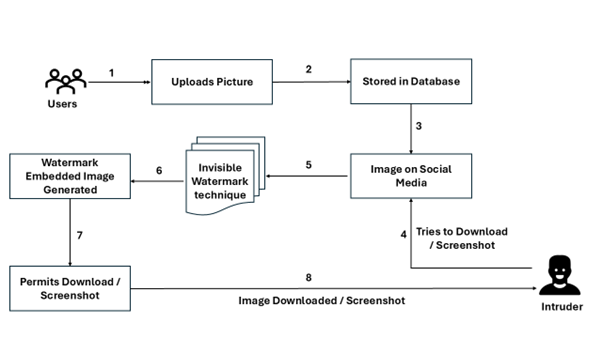
- “Democracy Unravelled” – International Conference on Exploring the South Asian Political Perspective March 26, 2025
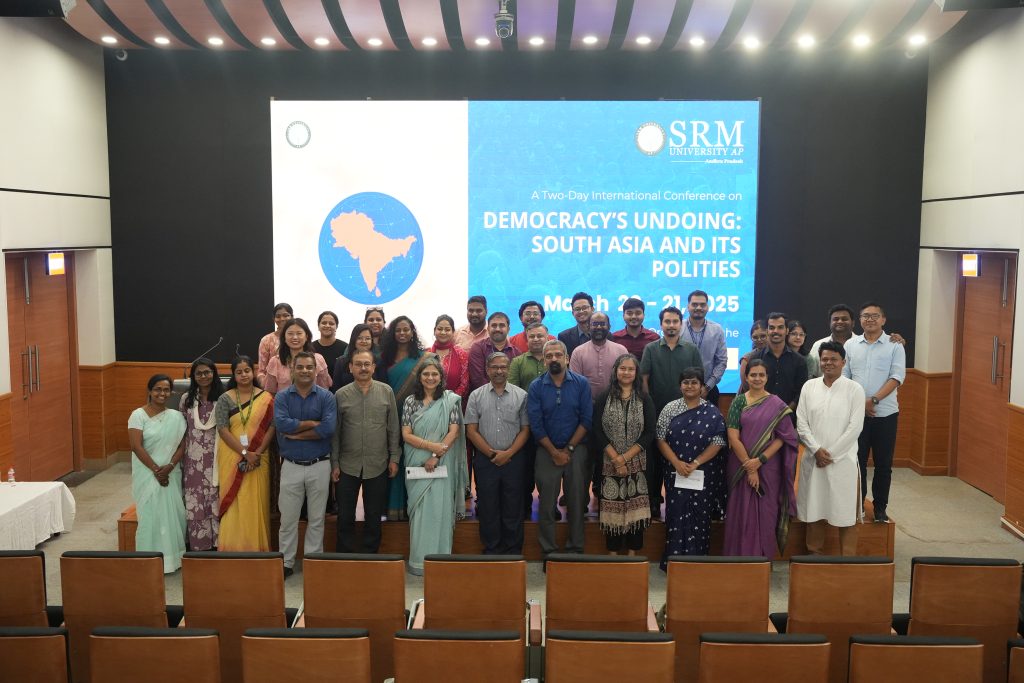
Academicians, research scholars, and social scientists from renowned institutions across the world assembled at the two-day international conference on “Democracy’s Undoing: South Asia and its Polities” hosted by SRM AP on March 20-21, 2025, to explore the pressing issues and challenges faced by various democracies in South Asia. The conference organised under the aegis of the Department of Political Science, Easwari School of Liberal Arts, explored the concept of democracy and its relevance to the current political landscape in South Asia.
Prof. Vishnupad, Dean – Easwari School of Liberal Arts set the tone for the conference in his welcome address. He deliberated on various aspects of democracy and shared the vision behind Easwari School of Liberal Arts, now home to seven vibrant departments, each oriented towards the holistic growth of its students— intellectual, emotional, and ethical. Dr Idris Hassan Bhat, Assistant Professor of the Department of Political Science and the convener of the conference, addressed the resilience of democratic ideals in South Asian nations.
Prof. Ashok Acharya, from the Department of Political Science, University of Delhi, delivered the first keynote session on the contextual explorations of liberalism. He examined liberal values and how they align with democracy in today’s complex political climate. Tracing the relationship between liberalism and democracy, Prof. Acharya stated, “The 20th century saw democracy take root as a regime, while liberalism functioned as a guiding ideology with an emphasis on liberty, self-governance, and diversity.” He elaborated on the significance of ‘dissensus’ in a liberal democratic society.
The second keynote address welcomed Dr Kurt Annen, a Professor of Economics at the University of Guelph, Ontario, Canada, who offered a global perspective on democracies. One of the central themes of the lecture was the challenge of establishing a clear causal relationship between democracy and economic growth. He also highlighted the importance of understanding the mechanisms through which democracies may foster economic development.
The conference also featured thought-provoking panel discussions, roundtable sessions, and paper presentations on various topics, ranging from Religious Nationalism and Homeland Fantasies in South Asia to the State of Minorities in South Asia to the Challenges of Inequality and Poverty to Democracy, that provided intense academic engagement and fresh perspectives for the participants and students at the Easwari School of Liberal Arts.
Continue reading → - Bishnois Combating Climate Change March 24, 2025
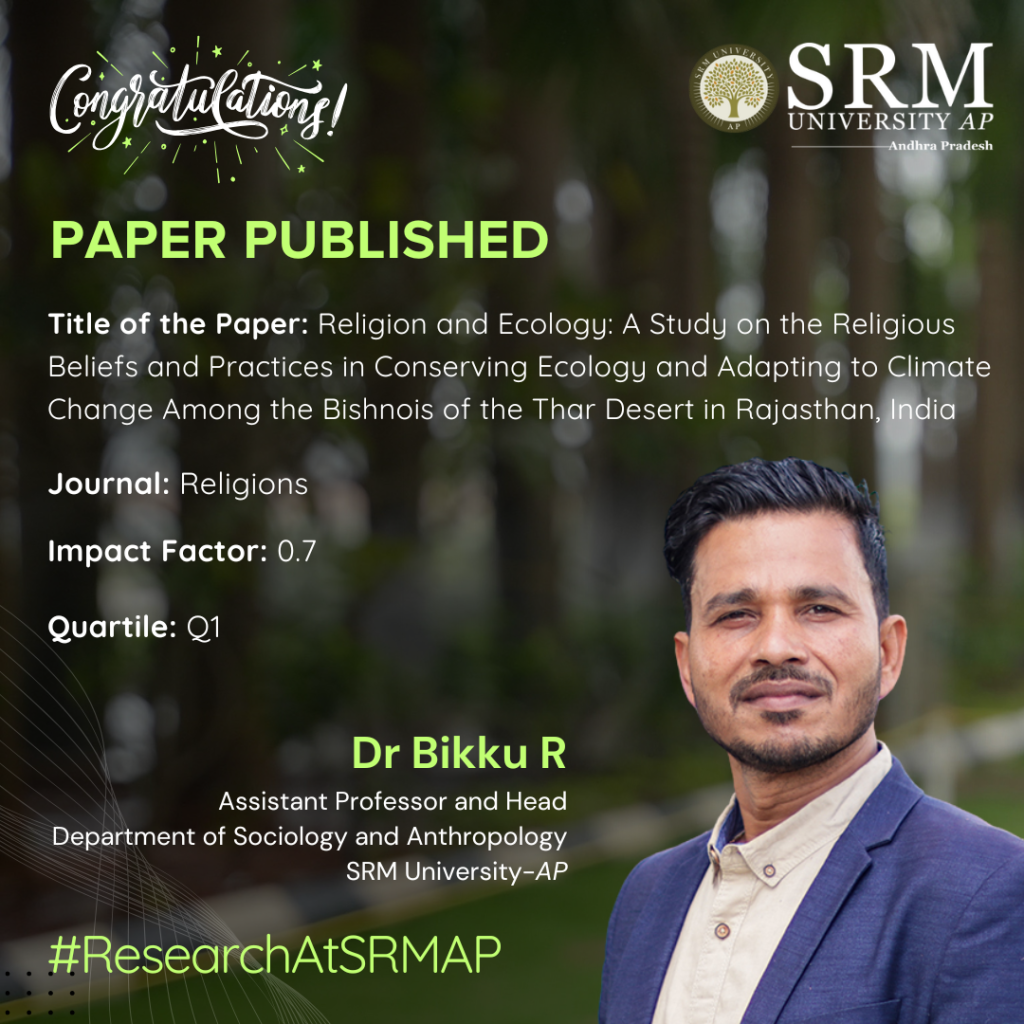 Prof. Bikku R, Assistant Professor and Head of the Department of Sociology and Anthropology, examines in his research paper, “Religion and Ecology: A Study on the Religious Beliefs and Practices in Conserving Ecology and Adapting to Climate Change Among the Bishnois of the Thar Desert in Rajasthan, India,” the environmental practices and knowledge of the Bishnoi community in Khejarli Village, Jodhpur. He highlights the connection between these local communities and their crucial role in conserving the region’s flora and fauna, as well as their efforts in combating climate change.
Prof. Bikku R, Assistant Professor and Head of the Department of Sociology and Anthropology, examines in his research paper, “Religion and Ecology: A Study on the Religious Beliefs and Practices in Conserving Ecology and Adapting to Climate Change Among the Bishnois of the Thar Desert in Rajasthan, India,” the environmental practices and knowledge of the Bishnoi community in Khejarli Village, Jodhpur. He highlights the connection between these local communities and their crucial role in conserving the region’s flora and fauna, as well as their efforts in combating climate change.Abstract
Climate change is a global issue with diverse regional impacts threatening the survival of both human and non-human species. While the academic discourse on climate change predominantly focuses on macro-level studies, it often neglects the vital role of local environmental practices and the perspectives of affected communities. This paper presents insights from ethnographic fieldwork conducted among the Bishnoi community in Khejarli Village, Jodhpur, in the Thar Desert of India. This study utilizes participant observations, semi-structured interviews, focus group discussions, and case studies to explore local environmental knowledge and practices aimed at mitigating and adapting to climate change. Findings reveal the Bishnois’ deep-rooted relationship with nature and the pivotal role of religious beliefs in shaping their conservation efforts. Since the 15th century, the Bishnois have been committed to protecting local species, such as plants and animals, which has been crucial for sustaining the desert ecosystem and combating climate change. Moreover, their religious teachings and principles have helped conserve values among younger generations, ensuring a lasting culture of environmental stewardship. This paper supports integrating micro-level ethnographic studies into global climate change dialogues, urging the recognition of local knowledge as an essential resource for addressing contemporary environmental challenges
Practical and Social Implications:
“The Bishnois’ enduring commitment to protecting wildlife and their natural surroundings demonstrates that integrating local, religious, and cultural values can help mitigate both natural and human-induced climate change. Expanding research on local communities’ ecological knowledge and conservation practices is essential for challenging contemporary climate change impacts. While global awareness is necessary, it is equally important to understand and support the valuable contributions of local communities in combating climate change. We can develop more effective, culturally relevant solutions to global environmental challenges by embracing these contributions”.
Future Research plan:
Dr Bikku is preparing to write a book on The Bishnoi Religion and Ecological Conservation
Continue reading → - A Meta Analysis on the Mental Health of War Refugees March 21, 2025
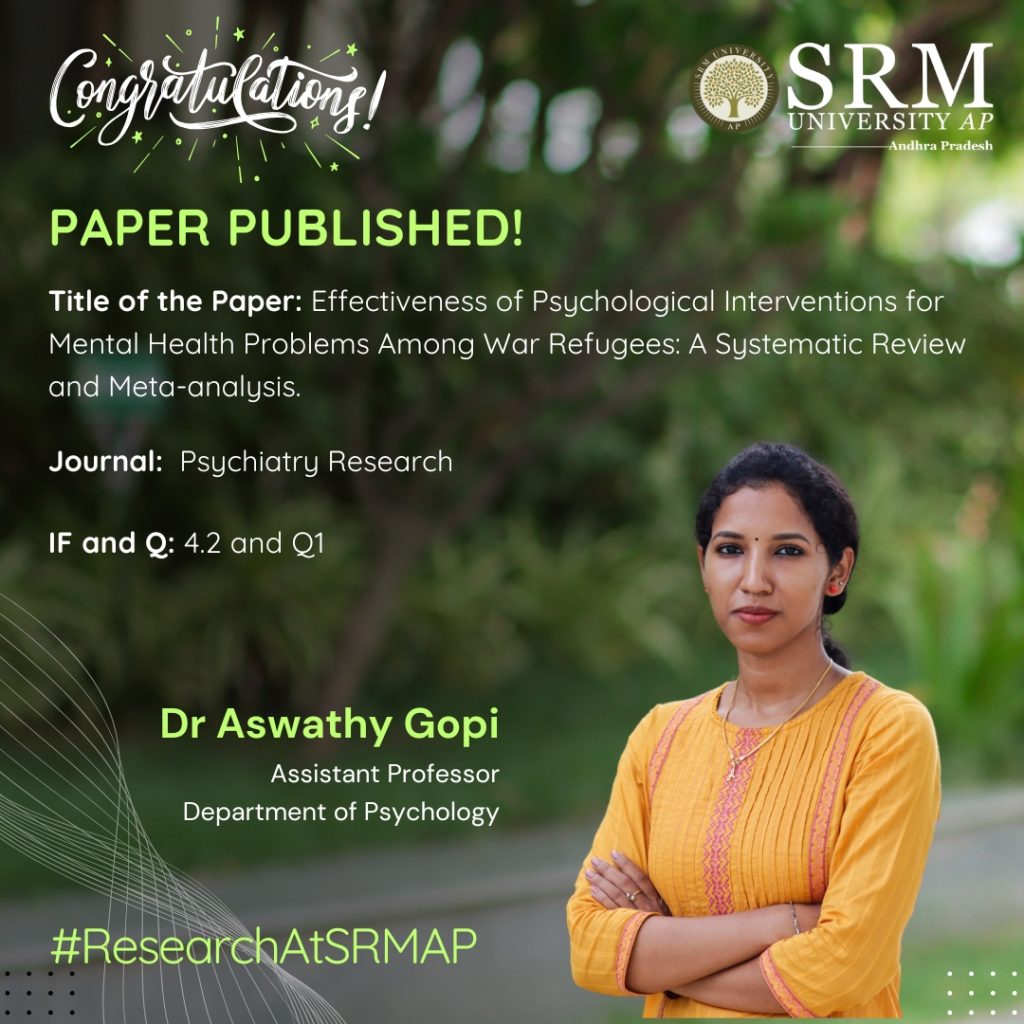 “I object to violence because when it appears to do good, the good is only temporary; the evil it does is permanent.”, this quote by Mahatma Gandhi serves as a stark reality that war leaves individuals grappling in severe trauma. Dr Aswathy Gopi, an Assistant Professor at the Department of Psychology, explores this impact in her research paper titled “Effectiveness of Psychological Interventions for Mental Health Problems Among War Refugees: A Systematic Review and Meta-Analysis.” Her paper sheds light on the profound effects of war on the mental health of refugees, emphasising the need for tailored approaches to support their psychological well-being.
“I object to violence because when it appears to do good, the good is only temporary; the evil it does is permanent.”, this quote by Mahatma Gandhi serves as a stark reality that war leaves individuals grappling in severe trauma. Dr Aswathy Gopi, an Assistant Professor at the Department of Psychology, explores this impact in her research paper titled “Effectiveness of Psychological Interventions for Mental Health Problems Among War Refugees: A Systematic Review and Meta-Analysis.” Her paper sheds light on the profound effects of war on the mental health of refugees, emphasising the need for tailored approaches to support their psychological well-being.Abstract:
War and displacement have led to a global mental health crisis, with 117.3 million individuals displaced and one in five refugees experiencing psychological distress. Despite the availability of psychological interventions, their overall effectiveness remains unclear. This systematic review and meta-analysis evaluate the impact of psychological interventions on war refugees’ mental health. A comprehensive search of PubMed, Web of Science, APA PsycNET, ScienceDirect, and Google Scholar (July 2024) identified 21 studies for systematic review and eight randomized controlled trials for meta-analysis. The results indicate a significant medium effect size of psychological interventions (SMD = -0.69, 95% CI: -0.87, -0.51, p < .00001), with in-person interventions showing a large effect (SMD = -1.03) and telehealth interventions demonstrating a small effect (SMD = -0.44) in reducing the mental health issues among war refugees. Findings support the effectiveness of psychological interventions, emphasizing the need for further research on digital mental health solutions to enhance accessibility for war refugees.
Explanation in layperson’s terms
War forces millions of people to leave their homes, and many of them experience severe stress, anxiety, and depression. In fact, one in five refugees struggles with serious mental health problems. While various psychological therapies exist to support them, it is unclear how effective they truly are. The current review identified the available in-person as well as telehealth-based psychological interventions that help war refugees in addressing their mental health conditions using evidence from 21 studies. A statistical examination of eight high-quality trials found that psychological support significantly helps refugees in reducing mental health issues. Although face-to-face therapy was reported to be the most effective, online therapy also demonstrated positive results, with a smaller effect. Given the limited number of studies on digital interventions, further research is warranted due to factors like displacement and limited healthcare resources of war refugee.
Practical Implementation and Social Implications
Psychological interventions involving both in-person and telehealth showed effectiveness for mental health problems among war-refugees. Policy makers and intervention developers should provide keen attention while designing interventions for mental health issues of war refugees as their challenges are distinct from other refugees and the general population. Further, the government and healthcare authorities can aim for adopting hybrid models integrating both telehealth and in-person interventions for the effective management of mental health problems of war refugees.
Collaborations
This secondary analysis was conducted in collaboration with Indian Institute of Technology Bhilai, Chhattisgarh.
Future research plans
Dr Aswathy Gopi is currently working on positive organisational health, with several research works under review in reputed high-impact journals. The research primarily explores organisational effectiveness and mental health outcomes across various populations. She is also collaborating with IITs and central universities to conduct both primary and secondary research in this domain.
The link to the article
https://doi.org/10.1016/j.psychres.2025.116432Continue reading → - An Algorithm that Redefines Employee Attrition Prediction Technology March 21, 2025
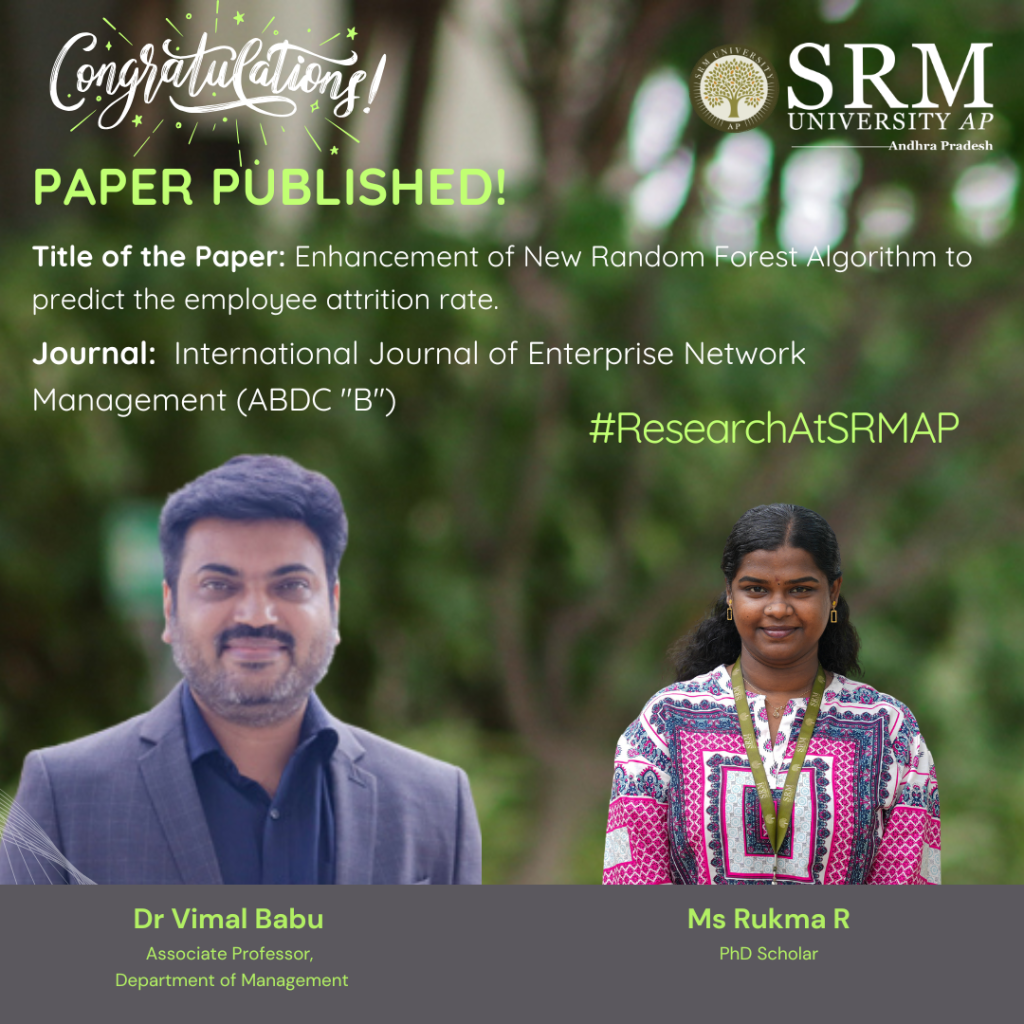
Dr Vimal Babu, Associate Professor in the Department of Management along with his PhD scholar Ms Rukma R, have co-authored a research paper titled “Enhancement of New Random Forest Algorithm to Predict the Employee Attrition Rate.” Published in the International Journal of Enterprise Network Management (ABDC-B), the paper also includes contributions from Dr Vijaya Prabhagar M, Assistant Professor at IIM Jammu.
Their work focuses on improving machine learning techniques to better predict employee attrition, that is, the employees who are likely to leave the organisation. The study focuses on the impact of HR analytics adoption by applying algorithms to predict employee attrition. It uses the Random Forest algorithm to identify reasons for attrition. However, this algorithm can be slow due to the large number of decision trees it uses. To improve it, the study proposes a new method that selects the best decision trees using a technique called fractional factorial design, which outperforms all others in predicting employee attrition.
Abstract
The problem of employee attrition in every organisation concerns the employee turnover ratio, thereby increasing the cost of investment in human resources. Various factors are reasonable for the rapid attritions at different phases. The purpose of the current study is to predict the employees who are likely to leave the organization. The factors that lead to attrition are identified using the Random Forest algorithm. The Random Forest algorithm is a widely used supervised machine-learning technique for classification and prediction. However, the random forest algorithm has certain issue like it is too slow and ineffective for real time predictions. i.e., the large number of trees can make the algorithm, which results in a slower model. Therefore, the study proposes, a new alternative for choosing the appropriate decision trees based on the concept of fractional factorial design of experiments. The different performance criteria were compared across the modified random forest algorithm, existing random forest algorithm, Support Vector Machine (SVM), Logistic Regression (LR), Navie Bayes (NB), K – Nearest Neighbour (K-NN), Decision Tree, XG Boost tree and Neural Network (NN). It was found that the modified random forest algorithm excelled in all criteria and performed better than the existing ones.
Practical Implementation/Social Implications of the Research
Practical implication: It emphasises the importance of focusing on factors like Business Travel, Job Role, Over Time, Department, Marital Status, and Education to reduce employee attrition. Organisations should design retention programs that support frequent travellers, manage overtime effectively, and address specific departmental needs. Tailoring job roles, promoting work-life balance through flexible hours, and providing educational opportunities are key strategies for enhancing employee satisfaction and retention.
Social Implication: The measures of this study can transform work culture into a more supportive and inclusive environment, promote gender equality by supporting employees with family responsibilities, and contribute to economic stability through reduced attrition. By investing in employee well-being, organizations can also strengthen their community engagement and corporate social responsibility initiatives for both employees and the broader society.
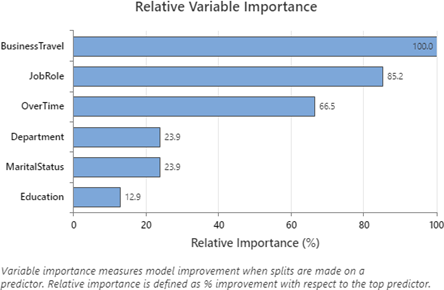
Future Research Plans
Future research could explore other factors influencing employee attrition, such as organizational culture, leadership style, and employee engagement. Longitudinal studies could track changes over time to understand the long-term effects on attrition rates. Additionally, investigating the interplay between identified factors, such as how Job Role and Over Time influence attrition, could provide deeper insights. Expanding the study across different industries and locations may reveal specific trends, allowing for tailored retention strategies. Lastly, incorporating qualitative methods like interviews and focus groups could offer a richer understanding of employees’ experiences and perceptions, complementing the quantitative findings.
Continue reading →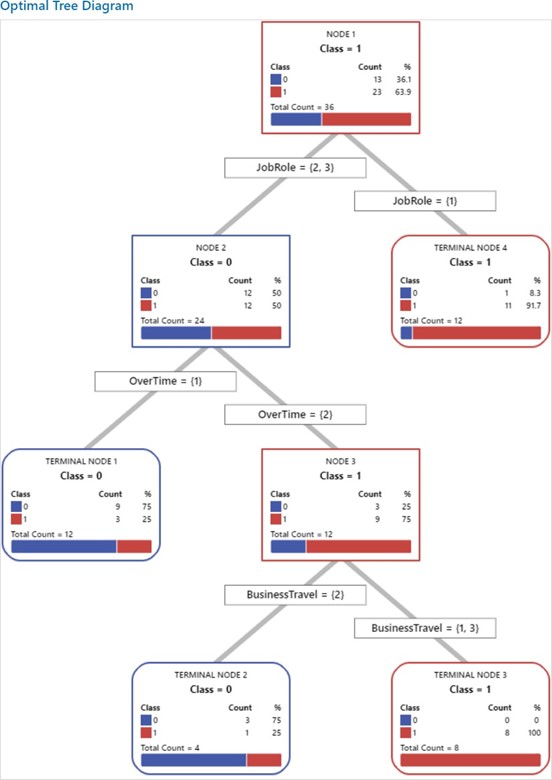
- Dr Amit Chakraborty and Scholar Publish their Research in Nature Index Journal March 21, 2025

Dr Amit Chakraborty, Assistant Professor in the Department of Physics and Ms Shreecheta Chowdhury, PhD Scholar, have co-authored a research paper titled “Boosted top tagging through flavour-violating interactions at the LHC”, which has been published in the European Physical Journal C (Nature Index), Q1 Journal having an impact factor 4.2.
Their research focuses on identifying a rare process involving the top quark, one of the heaviest particles. In this rare decay, the top quark transforms into a charm quark and a Higgs boson, which then breaks down into two b quarks. The team uses the data collected at the Large Hadron Collider (LHC), the world’s largest particle smasher, and employs Machine Learning techniques to investigate the possibility of understanding these collision events and identifying signatures of physics Beyond the Standard Model.
Abstract
This paper describes a method for detecting a rare top quark decay into a charm quark and a Higgs boson (H), which decays further into b quarks, at the Large Hadron Collider (LHC), and introduces a tagging algorithm to identify boosted tops using large-R jets containing b- and c-tagged elements. We consider the associated production of the top quark with a W-boson and identify different observables to discriminate the signal from the Standard Model (SM) background events. Although our model with improved jet substructure methods outperforms existing approaches to tag such rare decay tops, the improvement in the New Physics reach in terms of t → cH branching ratio is marginal, even at the high luminosity run of LHC, compared to the existing limits from the LHC 13 TeV data. Additionally, the paper utilizes SHAP, a Game Theory-based method, to analyse the contribution of each observable to the classification of events, offering valuable insights into the classifier.
Future Research Plans
The team plans to explore Beyond Standard Model (BSM) physics through collider phenomenology. Leveraging the Higgs boson as a portal, they aim to investigate its potential role in dark matter interactions, neutrino mass generation, and possibly being part of a larger scalar sector. Additionally, Dr Chakraborty will delve into ultra-light particle searches and develop novel jet physics techniques using advanced Machine Learning (ML) algorithms for particle identification and classification. A crucial aspect of his work will be creating testable search strategies, ensuring direct comparison with experimental data from current and future colliders.
Continue reading → - SRM AP, Amaravati’s Landmark Collaboration with Carnegie Mellon University’s School of Computer Science, USA for AI Research, Education March 9, 2025

SRM AP, Amaravati, is proud to announce a transformative five-year collaboration with Carnegie Mellon University’s School of Computer Science (CMU SCS), USA-one of the world’s foremost institutions in artificial intelligence (AI) and cutting-edge research. This strategic collaboration aims to push the boundaries of knowledge, innovation and education in AI-related disciplines, including machine learning, natural language processing, computer vision, infrastructure and systems, and AI ethics and policy.
At the heart of this collaboration is a shared vision to foster an ecosystem that nurtures groundbreaking research, cultivates exceptional talent, and accelerates advancements in AI-driven technologies.
A Pioneering Collaboration for AI Excellence

“CMU’s School of Computer Science is excited to work with SRM AP, Amaravati, on this landmark collaboration to advance research and bolster AI education. Together, we will shape the future of AI and empower the next generation of researchers, educators and industry leaders to push the frontiers of technology and drive meaningful change in society,” said Prof. Martial Hebert, Dean of CMU’s School of Computer Science.
Empowering Research Through Global Collaboration
As part of this collaboration, SRM AP, Amaravati’s research faculty and researchers will have the opportunity to engage directly with the esteemed faculty and researchers at CMU’s School of Computer Science. They will immerse themselves in CMU SCS’s pioneering AI labs, working alongside global experts in key research domains. This will facilitate research, knowledge sharing and the development of state-of-the-art AI innovations that address real- world challenges.

Dr P Sathyanarayanan, Pro-Chancellor of SRM AP, Amaravati, said that “To further strengthen research capabilities, this collaboration will also pave the way to establish advanced AI labs at SRM AP, Amaravati. These labs will be incubators for novel AI research, fostering a stimulating environment that promotes academic rigor, interdisciplinary collaboration and technological innovation”.
Advancing AI Education with World-Class Learning Opportunities
Beyond research, this collaboration is designed to enrich the academic experience of SRM AP’s teaching faculty and research scholars. Selected faculty members and scholars can audit cutting-edge AI courses at CMU’s School of Computer Science as visiting participants. This exposure will allow them to engage with CMU SCS faculty and contribute to developing robust AI curricula at SRM AP. They will also gain hands-on experience in designing assignments, worksheets and examinations that mirror real-world AI problem-solving scenarios, enhancing the quality of AI education at SRM AP, Amaravati,.
Unparalleled Research Internships for Students
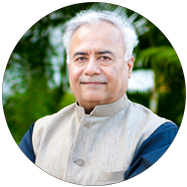
Prof. Manoj K Arora, Vice Chancellor expressed, “In a move that underscores its commitment to nurturing future AI leaders, the collaboration will offer SRM AP students the opportunity to undertake research internships at CMU’s School of Computer Science.”
Selected students will spend approx. six weeks each summer immersed in a world-class research environment, gaining firsthand experience in tackling complex AI challenges alongside leaders in the field. This experience will provide students with unparalleled insights and exposure to global research methodologies, setting them apart in the highly competitive AI landscape.
By leveraging CMU SCS’s expertise and SRM AP’s commitment to academic excellence, this collaboration will drive innovation, expand knowledge horizons and create a lasting impact on the AI ecosystem between the universities.
Continue reading →


